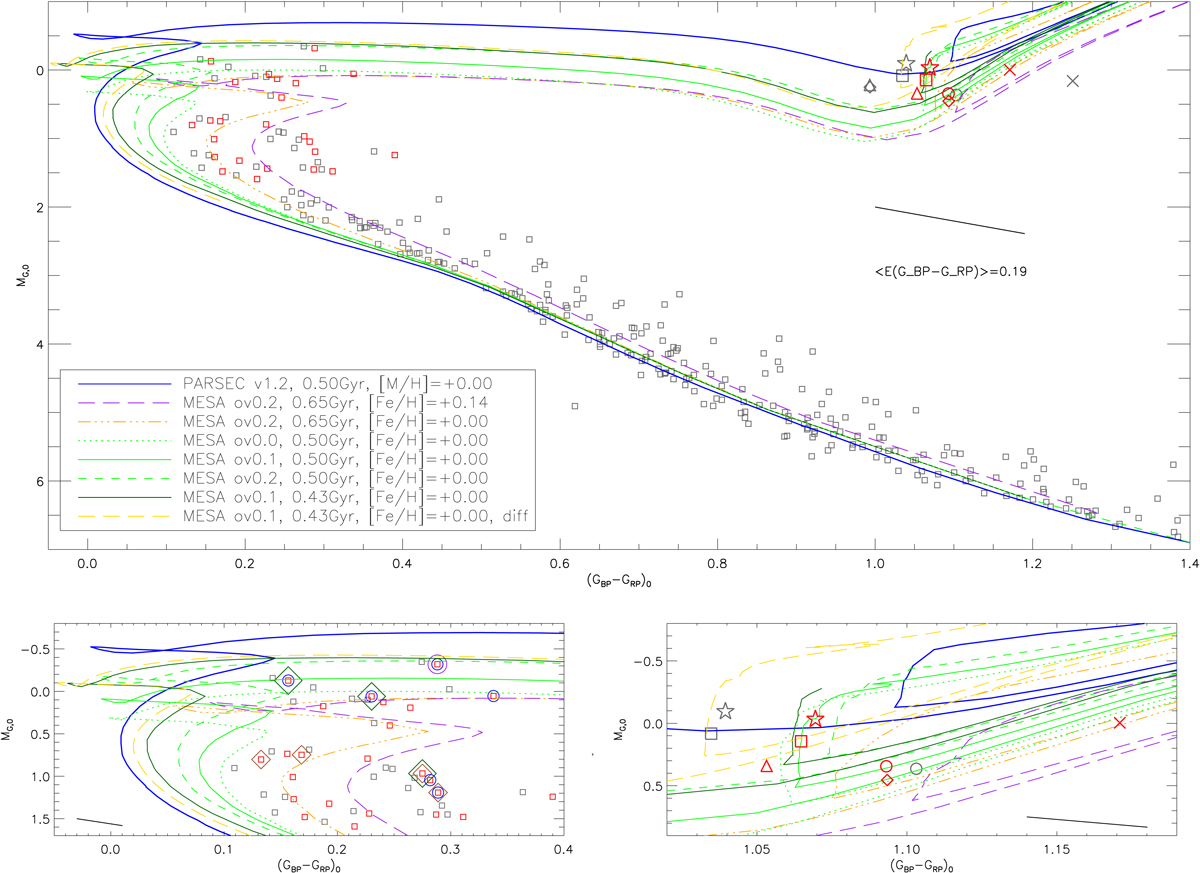Fig. 1.

Download original image
Gaia CMDs of NGC 6866 proper motion and parallax members. Top panel: grey squares mark members that have been shifted to the absolute and unreddened scale using the mean reddening for the 6 giants and 25 brightest main sequence members. The black line shows the mean reddening vector. Small red squares at the top of the main sequence mark the brightest members when shifted according to individual reddening values. All giant members are marked by specific grey symbols with cross reference to Table 1. Corresponding red symbols mark the same giants where they have been shifted according to their individual reddening values instead of the mean. Also shown are isochrones with details in the text and legend. Bottom-left panel: zoom of the upper panel in the upper main sequence area. The black line shows the typical one-sided 1σ reddening uncertainty. The purple circle marks a known δ Sct and binary star system (Murphy et al. 2018) that is also a close neighbour to one of the red giants, KIC 8264549. Dark green diamonds mark photometrically established fast rotators with periods from 2 to 5 days (Nielsen et al. 2013). Brown diamonds mark fast rotators with v sin i from 130−159 km s−1 (Frasca et al. 2016). Blue circles mark stars classified as photometrically variable in Gaia DR3. Bottom-right panel: zoom of the upper panel in the HeCB area. The black line shows the typical one-sided 1σ reddening uncertainty. Symbols are the same as in the upper panel.
Current usage metrics show cumulative count of Article Views (full-text article views including HTML views, PDF and ePub downloads, according to the available data) and Abstracts Views on Vision4Press platform.
Data correspond to usage on the plateform after 2015. The current usage metrics is available 48-96 hours after online publication and is updated daily on week days.
Initial download of the metrics may take a while.


